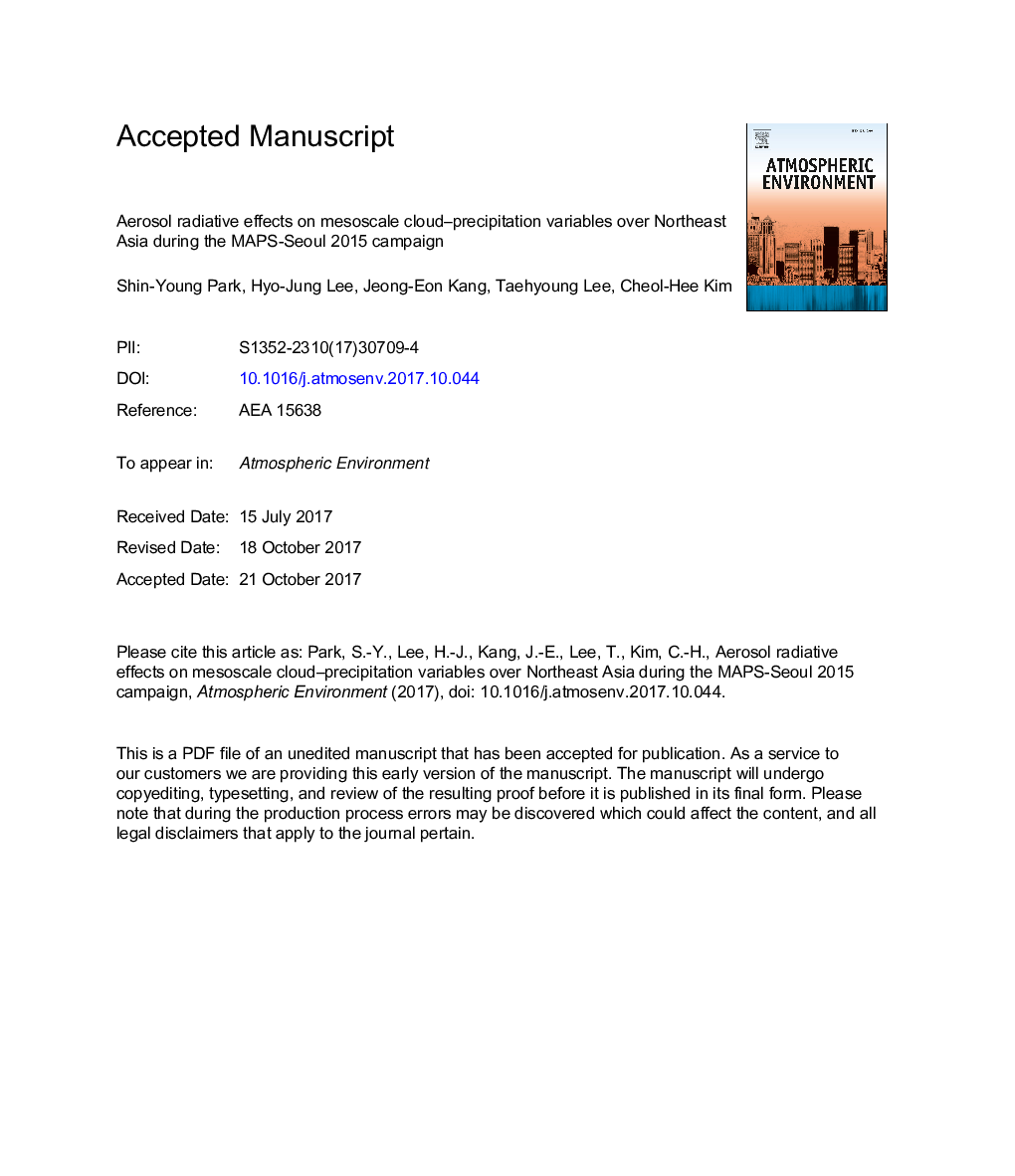| Article ID | Journal | Published Year | Pages | File Type |
|---|---|---|---|---|
| 8864344 | Atmospheric Environment | 2018 | 50 Pages |
Abstract
The online model, Weather Research and Forecasting Model with Chemistry (WRF-Chem) is employed to interpret the effects of aerosol-cloud-precipitation interaction on mesoscale meteorological fields over Northeast Asia during the Megacity Air Pollution Study-Seoul (MAPS-Seoul) 2015 campaign. The MAPS-Seoul campaign is a pre-campaign of the Korea-United States Air Quality (KORUS-AQ) campaign conducted over the Korean Peninsula. We validated the WRF-Chem simulations during the campaign period, and analyzed aerosol-warm cloud interactions by diagnosing both aerosol direct, indirect, and total effects. The results demonstrated that aerosol directly decreased downward shortwave radiation up to â44% (â282Â WÂ mâ2) for this period and subsequently increased downward longwave radiation up to +15% (â¼52Â WÂ mâ2) in the presence of low-level clouds along the thematic area. Aerosol increased cloud fraction indirectly up to â¼24% with the increases of both liquid water path and the droplet number mixing ratio. Precipitation properties were altered both directly and indirectly. Direct effects simply changed cloud-precipitation quantities via simple updraft process associated with perturbed radiation and temperature, while indirect effects mainly suppressed precipitation, but sometimes increased precipitation in the higher relative humidity atmosphere or near vapor-saturated condition. The total aerosol effects caused a time lag of the precipitation rate with the delayed onset time of up to 9Â h. This implies the importance of aerosol effects in improving mesoscale precipitation rate prediction in the online approach in the presence of non-linear warm cloud.
Keywords
Related Topics
Physical Sciences and Engineering
Earth and Planetary Sciences
Atmospheric Science
Authors
Shin-Young Park, Hyo-Jung Lee, Jeong-Eon Kang, Taehyoung Lee, Cheol-Hee Kim,
